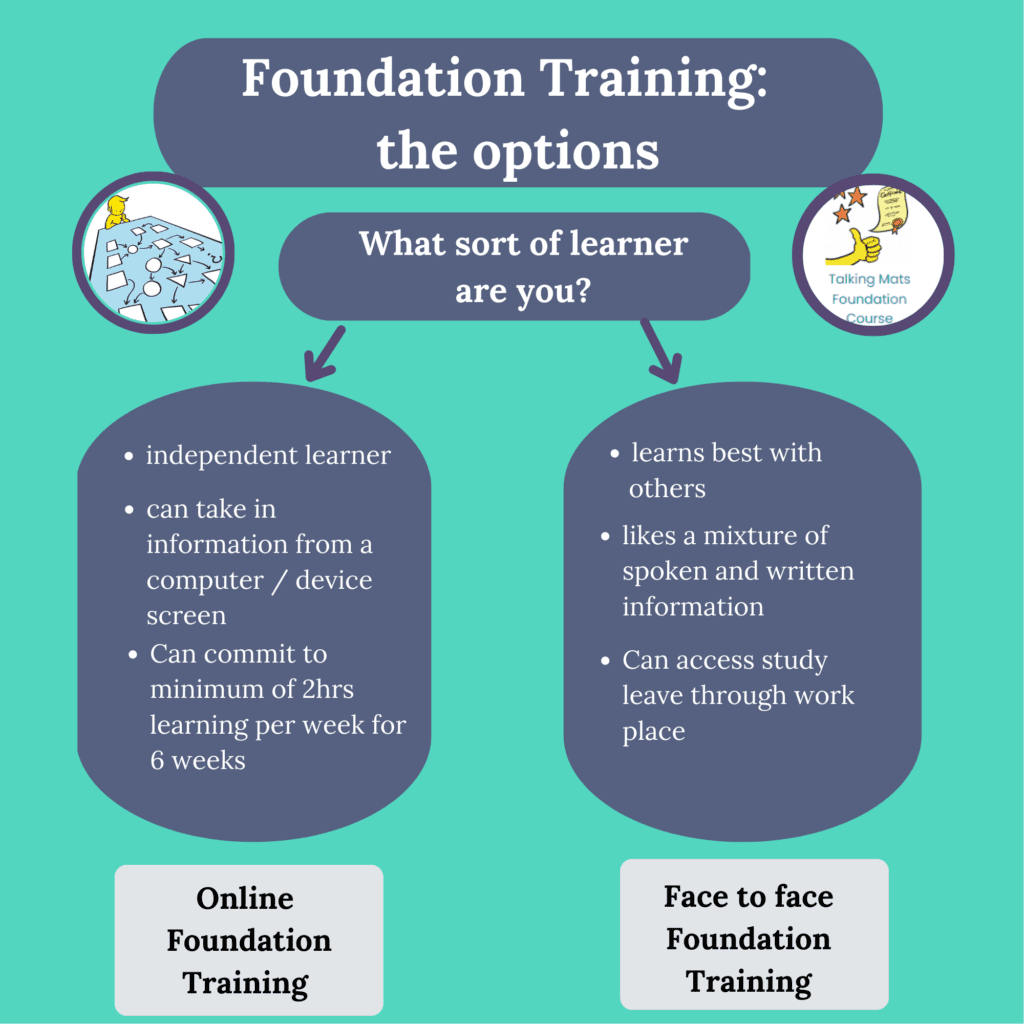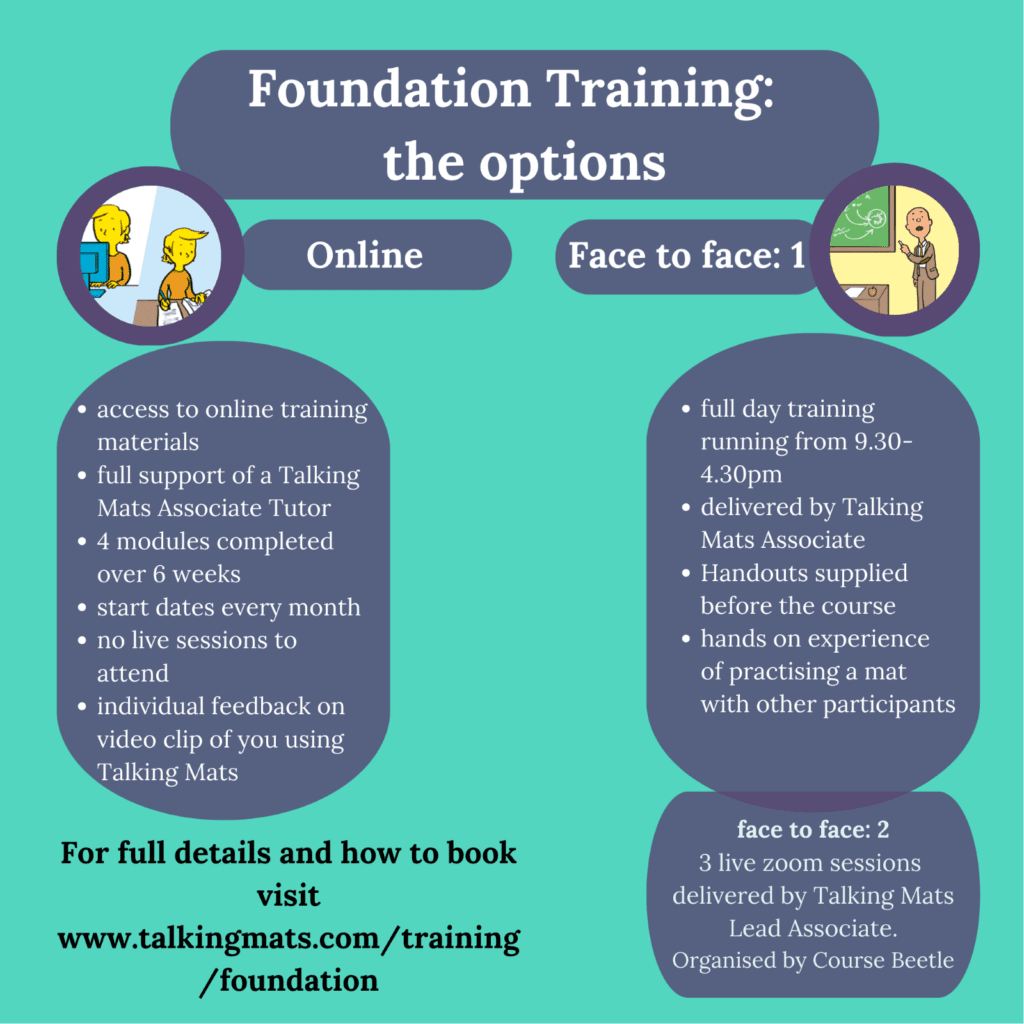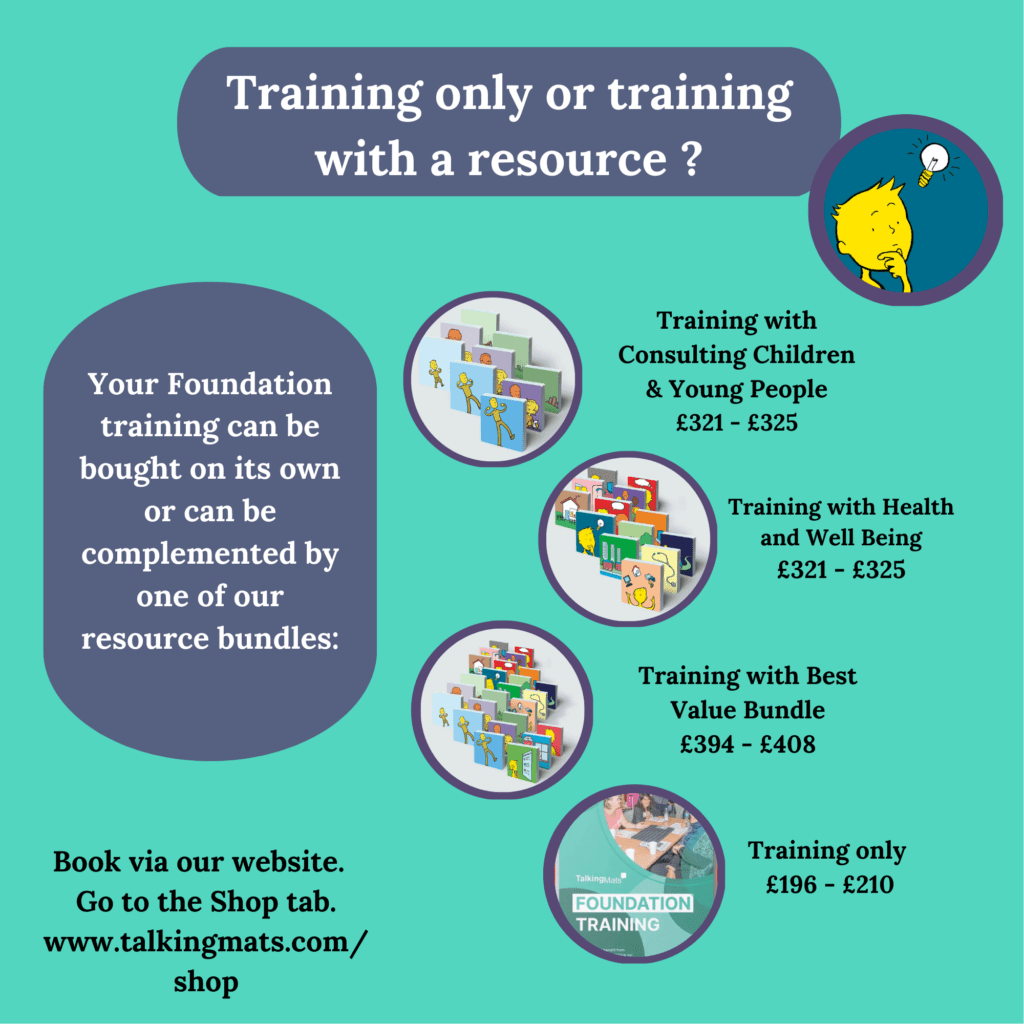Our thanks for this blog go to Olivia Ince, Talking Mats Licenced Trainer and Speech & Language Therapist. This blog post reflects on the use of a Talking Mat with a Thinker called M who speaks English as an additional language. The Listener in this Talking Mat is Jono Thorne who is a colleague of Olivia. Jono did this Talking Mat for his video as part of a Foundation Training course run by Olivia.
M is a young adult who came to the UK as an unaccompanied asylum-seeking child. M is from a country in Central Africa and speaks a language which is not widely spoken outside of the region. Accessing interpreting and translation services in the UK for their native language is very difficult and M has therefore had difficulties learning English. This means the people around M often have difficulties finding out M’s views, which is why Jono thought a Talking Mat could be an invaluable communication tool for M.
M already uses some visual support, for example hand gestures and using objects such as food items when having a conversation in the kitchen. The people around M are unsure what M’s level of comprehension is in English and therefore they make adaptions such as simplifying their language. M’s expressive language in English is typically the use of one- or two-word utterances and yes/no responses.
To see if M would be able to engage with the Talking Mat process, Jono chose a simple topic to start with and one which he knew would interest M: food. The Top Scale used was like/unsure/ don’t like. Jono noted that M quickly understood the concept of the Talking Mat and the visual element seemed to support M’s understanding. The Talking Mat process including the side-by-side listening also facilitated rapport building.

Jono noticed that M was decisive and seemed certain about their placement of the option cards. The Talking Mat helped M to share their views on a larger number of items than would likely have been possible via a verbal conversation. M also joined in with the recap of their Talking Mat as part of the review and reflect by reading out the Option cards with Jono, which meant M was even more involved with the process.
There were a couple of difficulties for M during the Talking Mat process: the blanks and the option to change where the Option cards were placed. Jono tried to explain these steps using simple language but M did not appear to understand these concepts due to their level of comprehension of English. As M had seemed sure of their initial placement of the Option cards and they joined in with the recap, Jono felt that the Talking Mat was an accurate reflection of M’s views that day. Continuing to model these steps to M will likely help them to develop their understanding of these parts of the Talking Mats process over time.
Jono reflected on how useful it was to now know which foods M likes and doesn’t like. He also reflected on the potential future use of Talking Mats with M on more complex topics and to facilitate participation in decision-making now that it’s clear M understands how a Talking Mat works.
If you are interested in completing Talking Mat Foundation Training, you can read more about it here.
It’s that time of year; the days are longer, there are lambs in the fields, the grass is getting cut and people are thinking about new beginnings. Maybe you want to embrace the Spring momentum and get a new skill under your belt, the one you’ve been hearing about from colleagues and reading about on social media; Talking Mats!
Talking Mats has been busy and there are new resources about to be launched but they have the line ‘only available to those trained in Talking Mats’. You attended something a few years ago and you think something was said that had something to do with Talking Mats – does that count? And it’s just pictures how hard can it be?
If this sounds like a conversation you’ve had with yourself read this blog to find out why training in this innovative communication tool is recommended.
I need this training; how can I get it?
You’ve made the decision that you’ll get trained in Talking Mats. What options are there to let you do this? Like all training providers over the last 3 years Talking Mats has had to adapt our training provisions. We have also had to be responsive to what our customers want; there is a much bigger demand for virtual training and online training than we experienced pre 2020. To reflect this we currently offer a variety of ways you can access our Foundation Training. Your choice will depend on the answers to several questions; what sort of learner are you? Can you do this as part of your working day or will it be in your own time? Can you apply for study leave? Following from that; would you like to buy a resource with your training and what is available ? The following diagrams should help simplify things and more in depth information about Foundation Training is on our website, as well as booking information. Being trained in Talking Mats allows you to access all our Advanced Courses and Resources and go on to become a Licenced Trainer.



 Online training login
Online training login 



